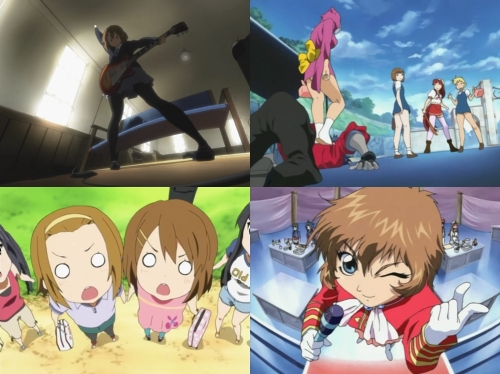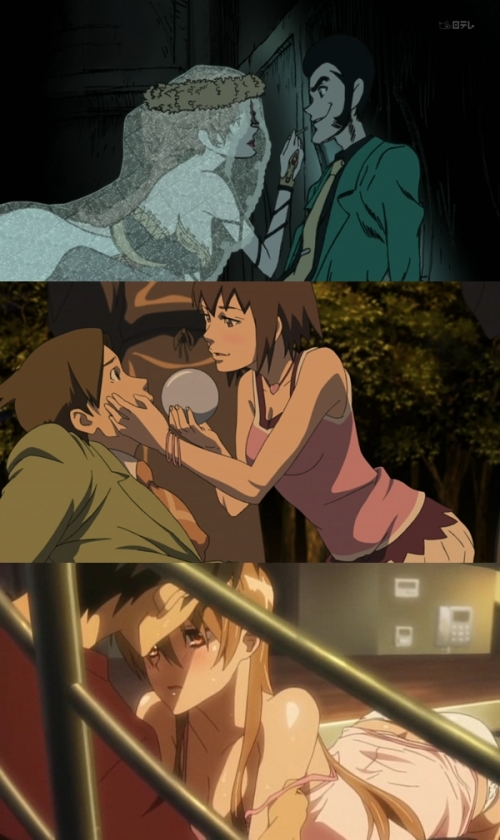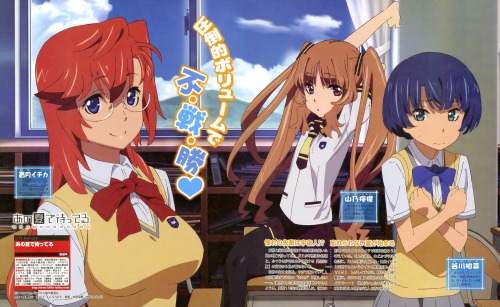Continuing with highlighting some of KyoAni’s most interesting subcontract work, I’ll discuss one of their collaborations with Gonzo as well as their work on the Tsutomu Mizushima x Shin-Ei Doga series ‘Haré+Guu’.
♦ Samurai Girl Real Bout High School #7

Storyboard: Shinichi Watanabe
Episode Director: Noriyuki Kitanohara
Assistant Ep. Director: Yutaka Yamamoto
Animation Director: Ichirou Miyoshi (Yoshiji Kigami)
Key Animation: Ichirou Miyoshi, Noriyuki Kitanohara, Hiroyuki Takahashi, Tomoe Aratani, Kazumi Ikeda, Shigeki Satou
KyoAni was in charge of episode 7 of this Gonzo series and they did almost everything from the key animation down to the photography work. The storyboard was done by Shinichi Watanabe (Nabeshin), though. Nabeshin’s involvement is pretty much obvious once you see the over-the-top gags, but I guess there are a lot of them in the other episodes, too. KyoAni certainly chose the perfect duo for this episode since Yoshiji Kigami (animation director) and Noriyuki Kitanohara (episode director) are great when it comes to overdone comedy. They even animated many parts on their own. You rarely see the kind of daring layout and animation work they displayed here in KyoAni’s more recent work, but now and then it shimmers through even in their newer anime. Like the ‘top down layout’ or those warped-perspective shots from the ground.
Particularly Taichi Ishidate’s directorial style inherited some of the wildness shown in this episode (like the posing of the characters), he’s a pupil of Kigami after all. Chiyoko Ueno, who was inbetweener on this episode, seems to have absorbed the bold approach of this episode as well. Her style today certainly shares some traits with the one Kigami displayed here in this episode. Speaking of Kigami, he probably animated the parts around the cooking contest (some cuts might be Kitanohara’s work, though). The shots of the audience are pure Kigami, this is pretty much his style once he has no character designs as basis:
One striking thing in the hallway scene at the beginning is that the characters’ hands and fingers are quite active which isn’t the case in the rest of the episode, so it’s certainly the animator who brought this about. It’s probably Tomoe Aratani’s part, who kind of passed this consciousness of hands and fingers in the acting on to Yukiko Horiguchi. Besides this scene, most of the animation is nothing to speak of even though some nice cuts are spread throughout the episode. It’s rather the framing/layout work that stands out in this episode. Once you watch this episode, it’s pretty much obvious that KyoAni didn’t have much time to work on it. There are a lot of stills and such so don’t expect anything outstanding animation-wise, but if you’re curious about KyoAni’s development as anime studio and how their approach changed over time, this is a good point to start.
Continue Reading »







